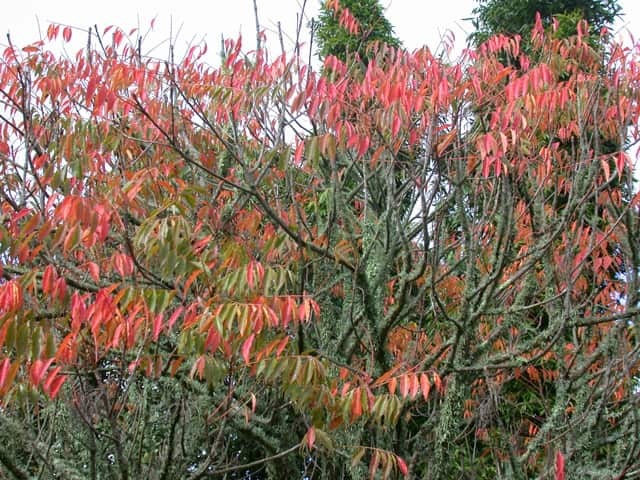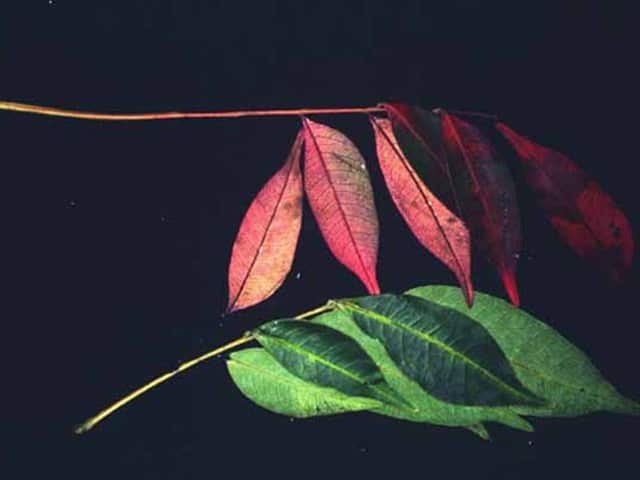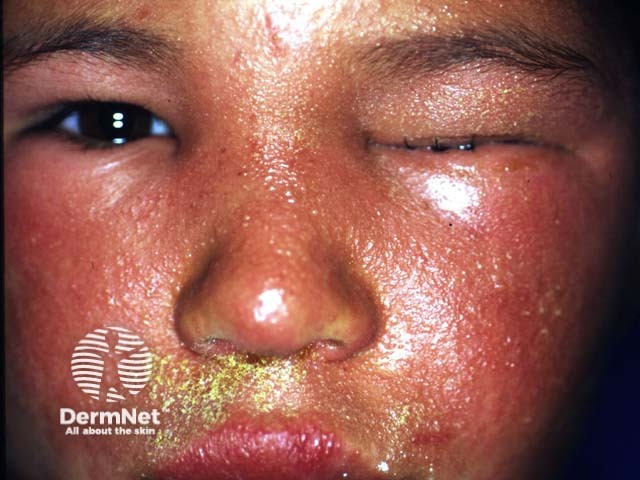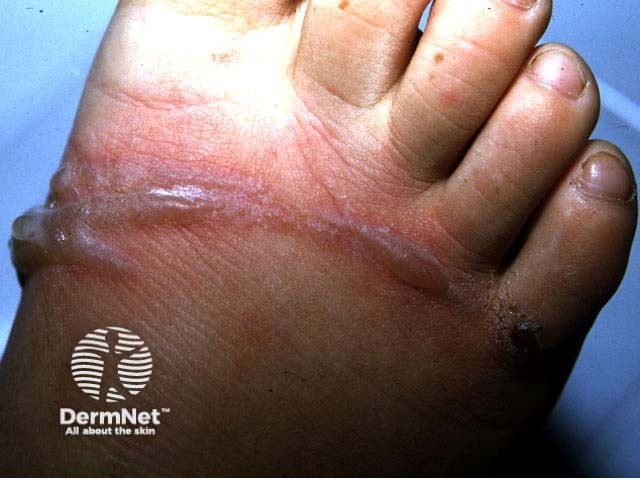Main menu
Common skin conditions

NEWS
Join DermNet PRO
Read more
Quick links
Common name: |
Rhus, rhus tree, Japanese wax tree (not the Japanese lacquer tree), scarlet rhus, sumac, wax tree. |
|
Botanical name: |
Toxicodendron succedaneum |
|
Family: |
Anacardiaceae |
|
Origin: |
There are 15 species of Toxicodendron native to China, at least 8 to Malaysia/Indonesia, and 6 to the Western hemisphere, although they have been introduced elsewhere as exotics |
|
Description: |
Most Toxicodendron are small trees, shrubs or vines with compound leaves, the exception being T. borneense which has simple leaves. The flowers are generally asexual with 5 sepals (or calyx lobes), five petals, and five stamens. The ovary has 1 locule, with a short style and three stigmas. All produce the skin-irritating oil urushiol, which can cause a severe allergic reaction; hence the scientific name which means ‘poison tree’. |
|

Rhus aromatica

Toxicodendron
Uses: |
An ornamental garden tree. In Japan, the tree is cultivated for the fruits from which a wax (sumach wax) is extracted for use in varnishes, polishes, ointments, and plasters. |
|
Allergens: |
Urushiol; 3-heptadec(en)yl catechol. |
|
Allergy: |
Toxicodendron species contain oleoresins known collectively as urushiol. In susceptible individuals, these compounds trigger a type IV delayed hypersensitivity reaction, a bullous allergic contact dermatitis. Toxicodendron dermatitis is the most common cause of contact dermatitis in the United States, exceeding all other causes combined (usually due to contact with Poison Ivy (Toxicodendron radicans) or Poison Oak (Toxicodendron diversilobum). |
|

Toxicodendron dermatitis

Plant dermatitis
Cross reactions: |
Anarcardaceae (mango, cashew, Japanese lacquer, Indian marking nut, and African poison ivy). Interestingly there are also several genera of unrelated families such as ginkgo and grevillea which, may cross-react with Toxicodendron spp. |
|
Other information: |
||
Patch test: |
Discouraged because of risk of sensitisation. |
|